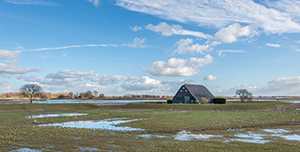Investigation to Assess Risk Factors for Well Water Contamination after Flooding

The percentage of waterborne disease outbreaks associated with unregulated sources of drinking water is increasing. Even when well-constructed and maintained, wells are at risk for contamination from flooding.
Wells can become contaminated by human pathogens such as Escherichia coli O157:H7, Giardia, Cryptosporidium, and enteric viruses, nitrates from fertilizer, and pesticides applied on nearby lands. There is minimal information about which characteristics of flooding events are the most important risk factors for well contamination.
This project examined contaminants in floodwater, surface water, and/or flooded and non-flooded wells from Tennessee (2010) and Kentucky (2011) to assess their potential public health significance.
E. coli, enterococci, and Salmonella were present in all flood water samples tested for microbial indicators.
Flood water contamination is variable and depends on what is nearby. These findings reinforce commonly recommended guidelines: Limit exposure to flood water. If a drinking well was potentially covered by flood water, it should be sanitized prior to use.
For more information on geological age, see this resource [PDF - 236 KB] from the U.S. Geological Survey.
- Page last reviewed: April 1, 2016
- Page last updated: April 21, 2016
- Content source:


 ShareCompartir
ShareCompartir